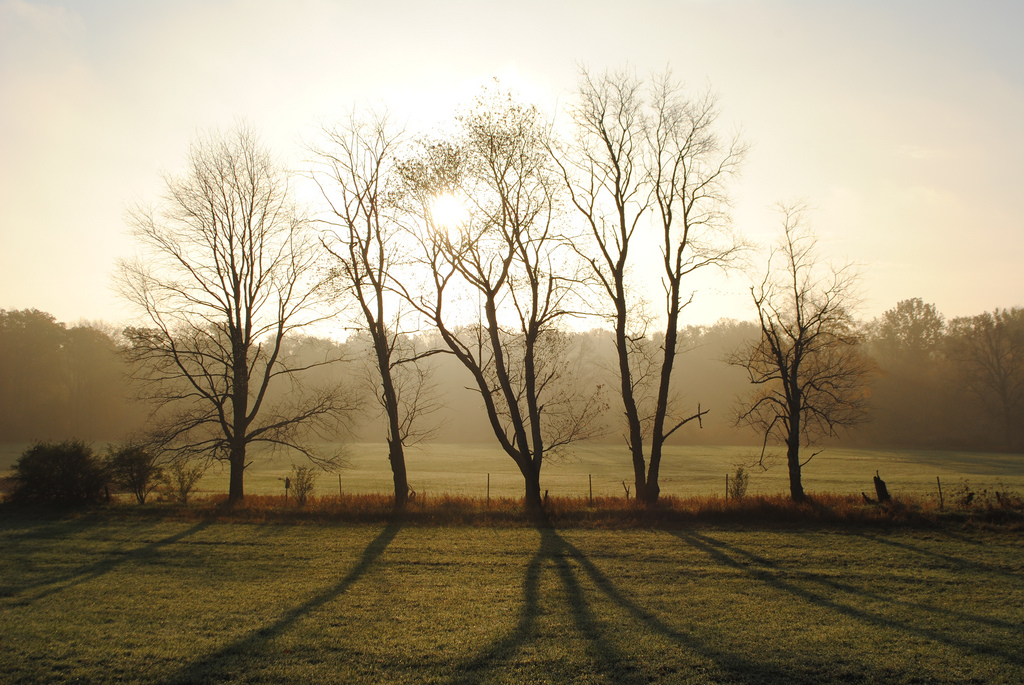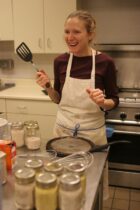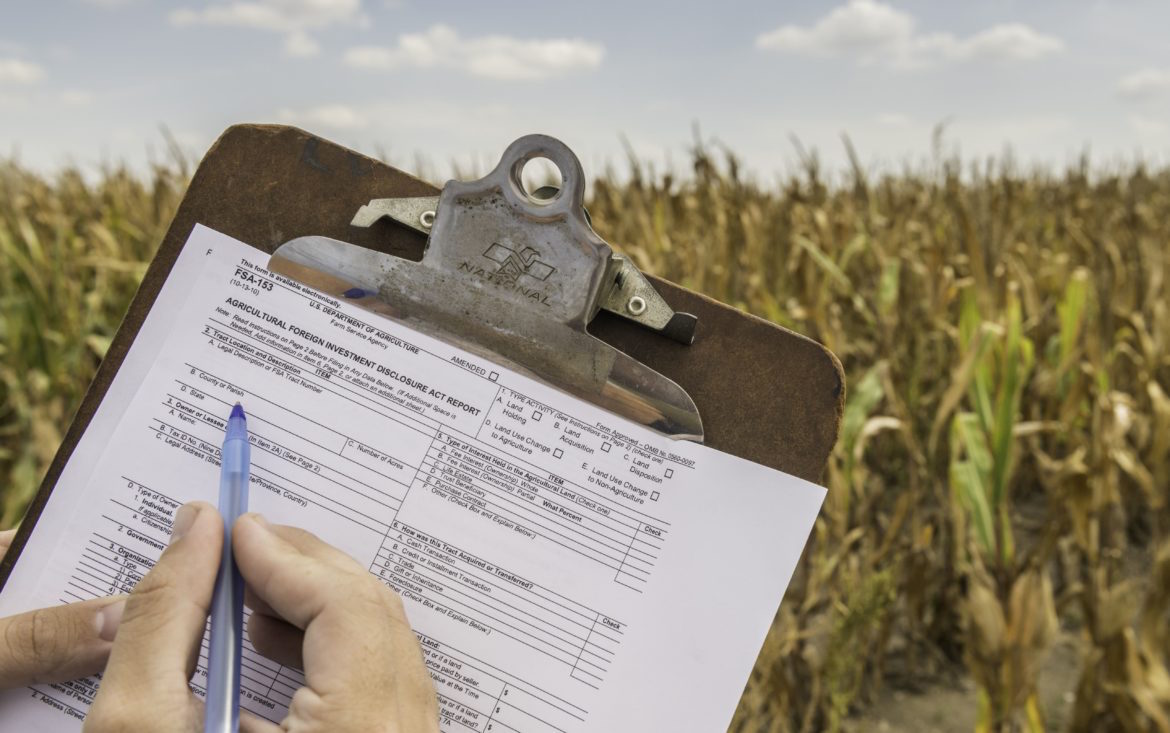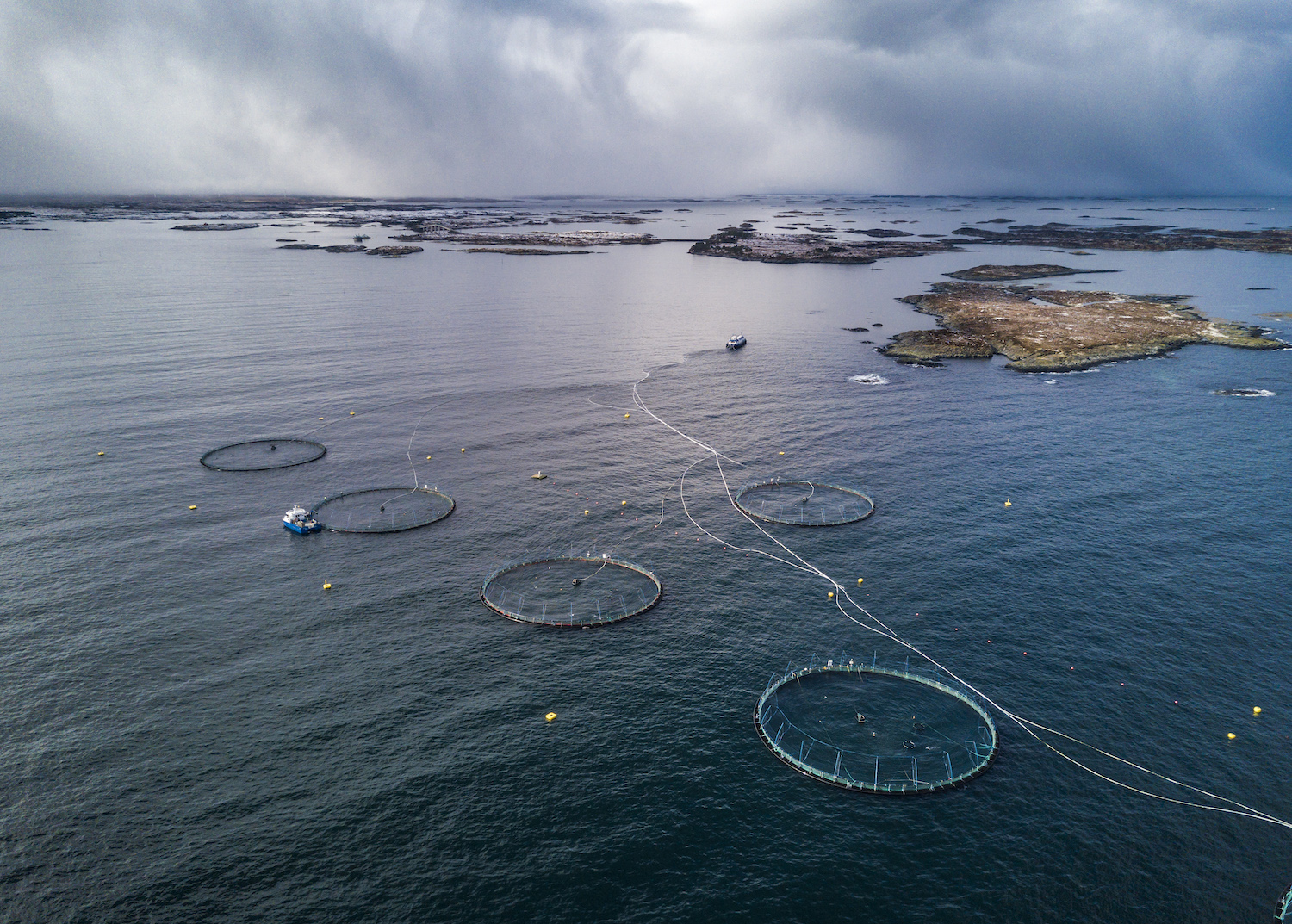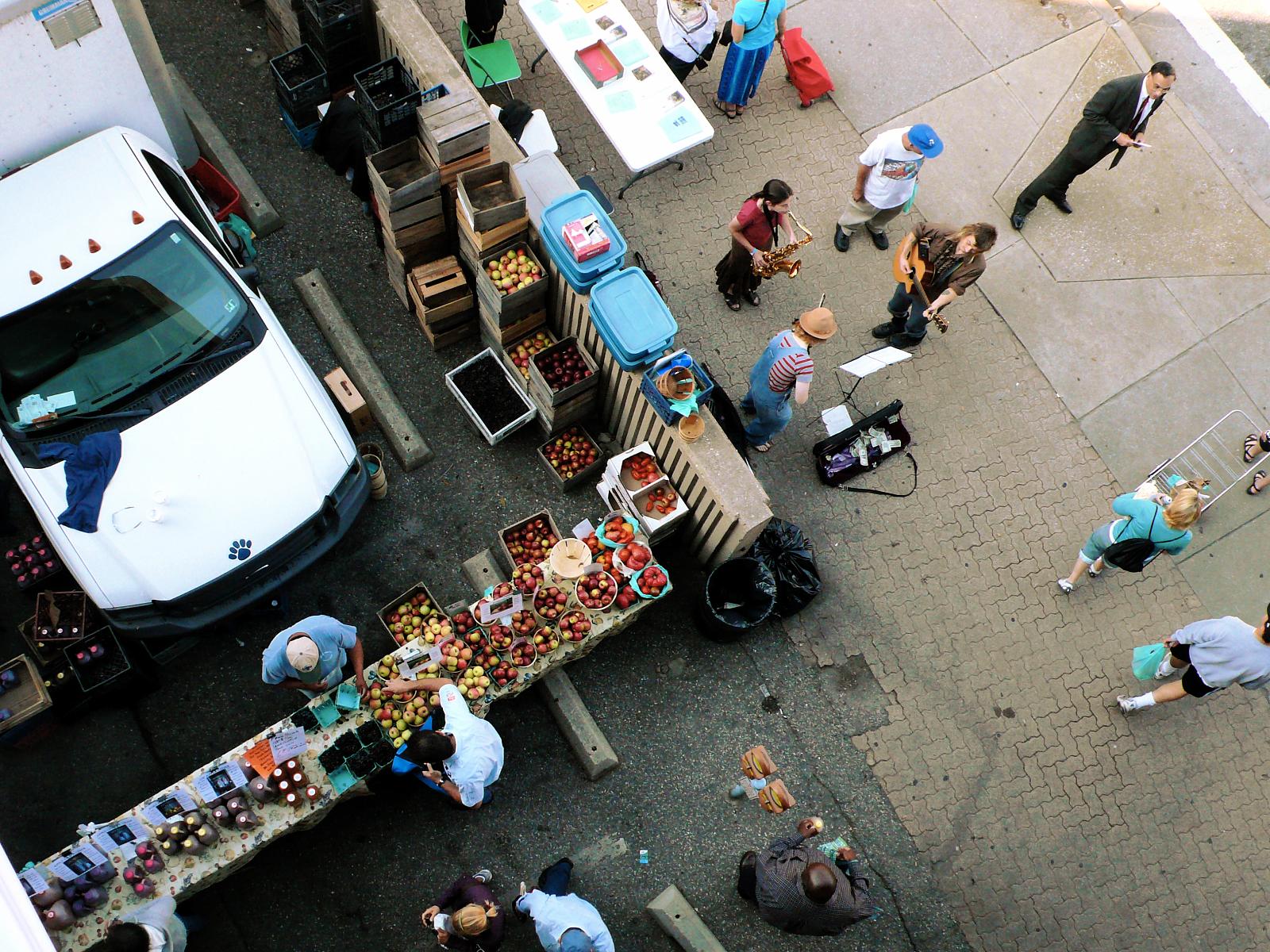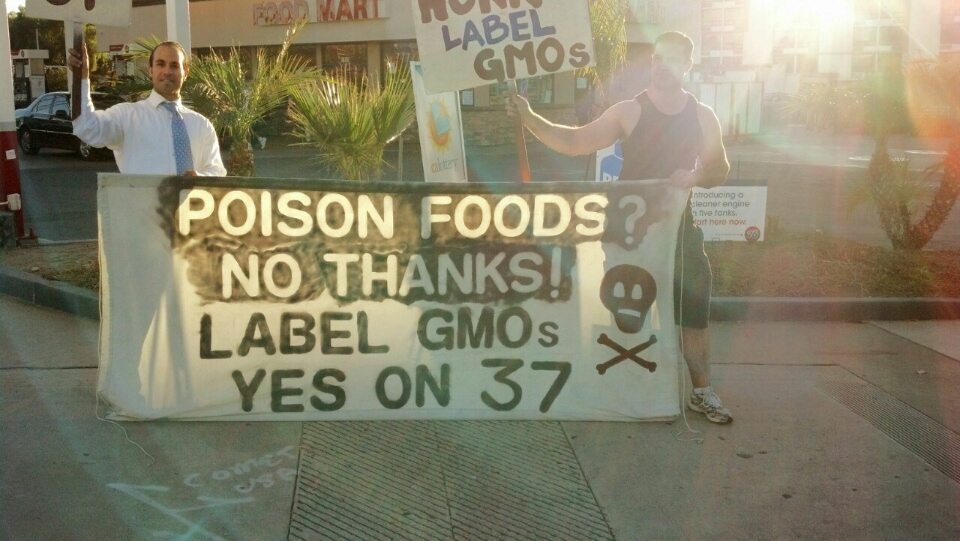The table at Windfall Farms is covered by a map, formal plans from 2011 to divide the land into four sections and sell it for industrial development. Windfall, a small vegetable farm 65 miles north of New York City, was experiencing a pressure that’s increasingly common to American farmers—development is converting farm and ranch land to other uses at a startling rate. In the 20 years between 1992 and 2012, an area the size of New York state vanished. Today, we lose 175 acres of American farm and ranch land every hour.
Carving up the family property and caving into those lucrative pressures seemed the only solution to Windfall’s 66-year-old farmer Morse Pitts. The farm is called Windfall because the land fell like a surprise into the family’s hands when Pitts was a kid. He never owned the property outright, and no matter how well-loved his produce was by New York City chefs and the urban foodie press, he couldn’t afford to buy out his relatives. Luckily, a farmland protection miracle could.
~
Pitts sold his first truckload of pumpkins in New York City in 1980, and quickly shifted from selling only to restaurants and health food stores to direct sales at GrowNYC’s Union Square Greenmarket, which at the time was an emerging nexus for fresh food—in the days before the word “local” meant fresh. GrowNYC was formed after the first Earth Day in 1976, and its programs serve the dual tasks of providing access to fresh food for New Yorkers, and serving the growers who bring their foods to the city. Among other programs, the organization runs more than 50 farmers’ markets in New York City, including its flagship Union Square Greenmarket.
 Windfall Farms
Windfall Farms At the Union Square Greenmarket, farmer Morse Pitts cultivated a devoted following
Chefs followed Pitts to Union Square, where the farm grew a following for the quality of its food, and beyond-organic philosophy. Windfall uses no chemicals, not even the ones approved by organic standards. One restaurant reports that its clientele notices when sourcing switches from Windfall, because the produce is not as vibrant.
Minus chemicals, the farm relies on lots of labor, which is a costly approach because chemicals are subsidized and labor is not. If the habit of needing people is expensive, it has paid the farm well in human capital, by cultivating loyalty and community. One of Windfall’s farmers, Hector Gonzalez, and his family worked elsewhere in the Hudson Valley, and specifically sought to work on a farm that didn’t use chemicals; the crew has a distinct imprint at the farm, and on Windfall’s triple-washed greens.
Producer-only farmers’ markets like the Union Square Greenmarket puts farmers right in the city, and regular shoppers inevitably get to know who grows their food. At market, Pitts sees customer curiosity as a chance not just to discuss growing practices, but to encourage people to come to the farm for a visit.
Workers like Laurel Bell became acquainted with the farm through her partner Kevin Capliki, who started out helping at the Greenmarket more than a decade ago. Bell grew attracted to Windfall after a decade working in the restaurant industry. She’d grown up on a farm in Virginia, and as she got to know Windfall, she took up the invitation to visit the farm and be involved. Now she runs the farm’s Sunday stand outside the Museum of Natural History on Manhattan’s west side, and makes decisions about what to plant and sell. Caplicki’s social action goals have led him to be more and more involved with the farm, so the two are very much a part of Windfall.
 Windfall Farms
Windfall Farms Microgreens on display at Windfall Farms’ Union Square Greenmarket stall
That kind of broad invitation for participation is what, in 2012, inspired Windfall employee Tanya Jurcic to reach out to the Orange County Land Trust. Jurcic felt invested in the farm, even though she was nothing like an owner, and at the time, Pitts was considering selling and farming elsewhere. The Trust had secured protection for nearly 6,000 acres of farmland since its founding in 1993. It was worth a try.
When the organization said it’d help, Pitts was surprised; he’d approached other land trusts in the past and been told that there was so much development pressure, the farm couldn’t be helped.
“Now they said we had so much development pressure, they had to help us!” Pitts marvels.
But miracles can take work.
Interstate 84 and State Route 17 loop like a noose around Windfall Farms. A strip mall of relay warehouses and light manufacturing including FedEx, United Natural Foods Incorporated, and a major medical supply company surround the farm. The railroad is right there, too. So close to the Big Apple, yet snug in the economic dungeon of the post-industrial Northeast, Orange County is a land-use battleground.
Assembling the transaction took a while, as land preservation efforts do. This particular project layered in provisions for an affordability model through partner Equity Trust, which effectively removes the value of the land from the business of farming by creating an agricultural ground lease; farmers get to own buildings and other farm improvements.
Equity Trust built its approach on the affordable housing movement. Applying that model to agriculture takes land values out of the business of farming as much as possible. The non-profit land owner stewards the land for the long-term public benefits it provides, and the farmer invests in infrastructure while building their business on land leased at rates that are less than commercial lease rates, and affordable for agriculture.
Another Hudson Valley farm, Roxbury Farm, was Equity Trust’s first venture into engineering farm conservation through ownership and long-term leasing. That project began almost two decades ago.

Mushrooms growing at Windfall Farms, where even pesticides covered by organic standards are not in use
Other stipulations in the legal framework keep the land in farmers’ hands over time, and help secure the viability of these future farms by keeping land lease rates affordable to the work of farming. Without such insulation, farmers have to fight rising property values and competitive land uses, such as wind or solar farms. In a food system where low price is still the ruler, this creates a near impossible cost scenario for growers.
The Windfall project also involved a mentorship structure with GrowNYC’s FARMroots Program, which provides beginning and established Greenmarket farmers with business and technical assistance.
Just as paperwork was ready to be signed for purchase of the development rights of Windfall FarmsWindfall Farms, however, another threat surfaced. Orange County Land Trust did a final walkthrough of the property, and saw the telltale signs of a development survey on the other side of a ridge. Something was happening. Downstate, at a retirement party for a Greenmarket manager, Pitts told Jack Hornickel, lawyer for the FARMroots program, that he thought his neighbor, farmer David Nemeth, could lose his eponymous farm, which sat adjacent to Windfall.
GrowNYC doesn’t throw around its weight in town battles. But Hornickel investigated on his own time, and learned that Nemeth Farm had gone into foreclosure, and the county was ready to sell. The 72-acre hay farm was slated to become a vegetable packing facility that would wash and cut California vegetables and distribute them to New York City. A bigger insult to neighboring Windfall and its 35 years of better-than-organic vegetable growing and land stewardship could not have been imagined, Michael Hurwitz, GrowNYC’s Greenmarket director says. After all, Windfall had cultivated a dedicated following of customers and restaurant clients for its high-quality vegetables. Hurwitz and FARMroots director Christopher Wayne, saw this as a direct threat to Windfall, and had Hornickel apply himself to the work, which broadly fit the organization’s mission of supporting the regional agricultural economy.
A retired New York City cop brought with him photos of his grandkids floating on inner tubes, illustrating that the wetlands the proposed facility planned to use were prone to flooding. This same person had good evidence against the proposal’s promise of nighttime quiet. He’d been stationed at a similar facility down in the city, the outsized Hunts Point produce market. The enterprise would noisily run 24/7, he told the board. Produce moves in the wee hours of the morning and forklifts never sleep.
The board tabled the project, but the farm supporters kept pursuing a solution to Windfall’s vulnerable situation. Orange County decided to hold off on the sale, and allow an alternative to emerge. The various nonprofits involved in protections for the farm came back to the table to discuss how to save Windfall and help David Nemeth at the same time. Less than two years later, in August of 2018, Nemeth Farm got its own set of protections.
 Windfall Farms
Windfall Farms Windfall Farms’ berry harvest
“Everyone involved had creativity, determination and the willingness to do something that didn’t exist,” says Hurwitz of the effort. “I didn’t think they could do it. I thought it was a done deal. I have never been happier to be wrong.”
Non-profit organizations can’t often take risks, but in this instance the collaboration was infused with an entrepreneurial spirit. On the part of Greenmarket, Hurwitz links this to support from the Doris Duke Charitable Foundation. “Doris Duke funds FARMroots’ succession planning work, and because they have a real understanding of issues facing farm families, they allow us to be creative, flexible, and imaginative,” he says.
Another factor contributing to the let’s-figure-it-out nature of the informal non-profit coalition is that Windfall itself has an exploratory mindset. Thanks to Pitts and his independent yet welcoming attitude, quite a few people have grown deeply connected to the farm.
The mentorship undertaken by FARMroots formalizes the habit of nurturing new farmers that’s long been in place on the land. The first pairing put young farmer Zach Pickens together with Pitts and Windfall in 2015. Pickens began visiting on weekends, riding on the Metro-North railroad with his collapsible bike. He was still running a rooftop farm in the city during the week, and started Farm Tournant with his wife Manda Martin on a single acre in 2016. The couple now have three acres on Windfall Farm, and a growing clientele in the city.
FARMroots is identifying and helping situate other new farmers on Windfall and Nemeth Farms land. The farmer-mentor receives an honorarium for 200 hours of time with each mentee, and the beginning farmer is paid travel expenses. The program provides technical support for this and other new operations, which will be linked to Greenmarket downstate.
It’s a novel style of farm incubation that grows jobs. Just as important, it helps secure existing farms; services like seed handlers and farm equipment shops rely on the business of farmers. And since most farming is machine farming, success relies on good access to tractor tires, fuel lines, and other essentials.
 Windfall Farms
Windfall Farms Garlic scape from Windfall Farm
Making Windfall a place where others can farm and run independent businesses, too, required easements to be tailored to the particular goal and place.
“We built innovative easement language that allows for a farmer to own a house and agricultural infrastructure separate from the land,” says Matt Decker, director of Orange County Land Trust. That language is courtesy of Equity Trust and the agricultural model it based off of the affordable housing movement.
Once the agricultural future of a property is secured, there can be restrictions that prevent multiple farmers from building houses and living on the land. In Windfall’s situation, that’s not the case. The farm businesses and buildings, existing and emerging through the mentorship baked into its approach, are and will be legally separate from the property.
A few new land trusts have embraced this format, including South of the Sound Community Farm Land Trust, in Washington State; SILT, the Sustainable Iowa Land Trust; and Trust Montana.
Scenic Hudson took a broad stake five years ago in the entire Hudson Valley, stating intent to treat the farmscape as important as the upstate watershed by unveiling its Foodshed Conservation Plan.
The Hudson Valley has many initiatives that help launch and land farmers, incubators and training programs like The Farm Hub and Glynwood Farms, but creating a direct, and thoroughly serviced bridge from land preservation to New York City markets is new. Linking beginning farmers on the farm to a willing mentor addresses a whole chain of farm-to-table barriers: knowledge transfer, business support, land access, and connection to strong markets. Any one of those elements is tough to navigate alone, but the critical link to established markets, and well-tuned consumers, really appeals to Cari Watkins-Bates from Scenic Hudson.
“I can’t stress enough the significance of the potential role of New York City markets in helping protect land upstate,” she says. “Connecting GrowNYC’s work with emerging farmers to protected farmland in the Hudson Valley farmland is a big next step for the field.”
